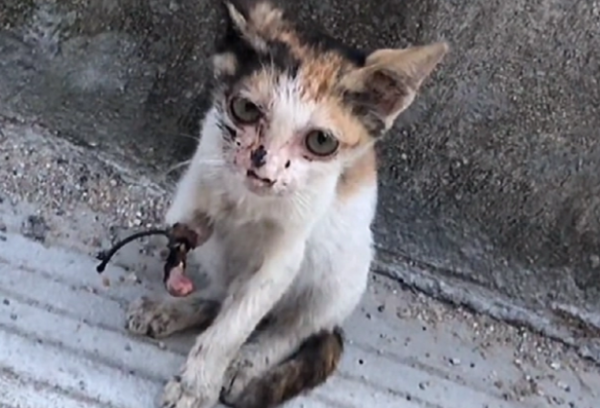Does the novel coronavirus have any impact on cats and dogs? This article has an answer!
The epidemic cannot stop the shovelers from keeping pets. Although the epidemic is not over yet, pet owners are still worried about pets such as cats and dogs. Will the new coronavirus have an impact on cats and dogs? There are answers to this article, let’s take a look.

The World Health Organization expressed this issue on its official Twitter on January 28, 2020. Translated into Chinese means: There is currently no evidence that pets are infected with the novel coronavirus. If you are worried, washing hands with soap after contact with pets is a common prevention method for many infectious diseases. At the beginning, I also held the same view as WHO, so I posted similar views on Weibo. However, after I looked up some literature, I began to make some corrections to my views. Let’s first look at some basic research. 2020/1/23 Chinese scholars published a study on the origin of the virus: "Homologous recombination within the spike glycoprotein of the newly identified coronavirus boost cross-species transmission from snake to human", this study pointed out that 2019-ncov should be the product of recombination and fusion of multiple coronaviruses. The main component of 2019ncov is bat coronavirus, but the spike protein used to invade cells on the surface of the virus has been replaced (homologous recombinant) into a new spike protein. There is no virus corresponding to this spike protein in the database, it comes from an unknown virus. It can be speculated that 2019-ncov should be born by the fused exchange of spike protein between bat coronavirus and an unknown coronavirus. On the first day of DNA publication, everyone guessed that 2019-ncov should be related to bat virus, but I don’t know if it is a mutation, evolution or recombination, but now it seems that it should be a recombination. 2020/1/25, research from the Wuhan Institute of Virology, Chinese Academy of Sciences showed that they made some genetically modified cells and produced engineered cells containing civets, mice, horseshoe bats, and pig ACE2 proteins. There are also some cells containing N protein and DPP4 protein. Test to see if the virus can infect other animals and whether it can be infected with other entrances. The results show that 2019-ncov can infect human/bat engineered cells or human/pig engineered cells, but cannot infect mouse/human engineered cells. It means that this virus should not be able to infect mice, but should be able to infect humans, pigs, bats, and civets. It also proved that the virus cannot use N protein or DPP4 protein to invade cells. Long story short: The cause of Wuhan pneumonia is 2019-ncov. Patients with pneumonia have 2019-ncov antibodies. Of course, having antibodies and having resistance are two different things. HIV-infected people also have antibodies in their bodies. 2019-ncov infected cells with ACE2 but could not infect guinea pigs. 2019-ncov can only infect cells with ACE2. SARS-cov can only infect cells with ACE2.

Next, we have two directions to look up. In the first direction, are there ACE2 in the cells in pets such as cats and dogs? (ACE2 is angiotensin converting enzyme 2). If there is ACE2 in the body of cats and dogs, can 2019-ncov also infect cat and dog somatic cells by binding to ACE2? The second direction is to conduct sufficient animal experiments to verify whether 2019-ncov can infect cats and dogs. Since the 2019-ncov epidemic has been short and no institutions or research institutes have been doing this work, we will use SARS-cov instead. After all, the 2019-ncov and SARS-cov viruses are 80% homologous, and both can only be infected with ACE2. Let’s first look at whether there is ACE2 in the body of cats and dogs, and what organs or tissues of cats and dogs contain ACE2 in?
In the above literature, researchers have discovered that ACE2 is distributed in the kidneys of cats and dogs.
Researchers in this document say that dogs' heart tissue contains ACE2.
The above is a study published in the Journal of Wuhan University, "Collection, Sequencing and Bioinformatics Analysis of Domestic Cats ACE2 Gene" (Journal of Wuhan University (Science Edition); Volume 51 Issue 6 (2005/12/24), P739-743) Abstract: Comparing three functional areas related to SARS-CoV binding in ACE2 serial, such as humans, domestic cats, civets, mice, rats, etc., it was found that domestic cats ACE2 and human ACE2 have the highest homology, suggesting that domestic cats ACE2 may play an important role in cross-species infection of SARS virus. Research from Wuhan University shows that ACE2 in domestic cats is highly similar to ACE2 in humans. Next second step, let’s find information. Can SARS-cov infect cats and dogs?
The above is a research article on
I decided to lock my little breasts at home from today until the end of the new coronavirus pneumonia epidemic and not go out. At the end of the article, in view of the above analysis, Bobcats strongly urged people who raise cats and dogs not to abandon their pets. When the epidemic comes, it is dangerous for pets to run around outside. At the same time, your pets are running around outside and contacting other animals outside will bring you the risk of new coronavirus infection. Bobcats recommend that you keep your cat and dog at home before the epidemic is completely extinguished.




